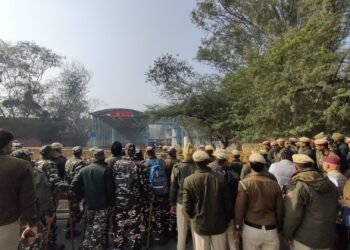Officials reported that the number of fatalities in Nepal from floods and landslides caused by rain has risen to 170, with 42 individuals still unaccounted for.
Extensive areas of eastern and central Nepal flooded since Friday

Extensive areas of eastern and central Nepal have been flooded since Friday, with sudden floods occurring in some regions of the country. Police reported that a total of 170 deaths have occurred in Nepal as a result of flooding and landslides.
Home Ministry officials report that 42 individuals have been missing due to floods, landslides, and inundation.
In flood-related incidents, 111 individuals have been injured, according to Rishiram Pokharel, Ministry of Home Affairs spokesperson. Search and rescue efforts involve all security agencies, with the Nepal Army transporting 162 people by air from various locations.
4,000 individuals rescued till now

Nepal Army, Nepal Police, and Armed Police Force personnel have rescued up to 4,000 individuals impacted by flood and inundation, according to Pokharel. He mentioned that all essential relief supplies, such as food grains, have been given to the rescued individuals.
According to the spokesperson, 400 people in the Balkhu area on the outskirts of Kathmandu received meals with assistance from social workers. Since Saturday, national highways have been obstructed, leaving hundreds of individuals stuck on different highways because of landslides.
Efforts are being made to remove obstacles on national highways caused by flooding, landslides, and inundation. Pokharel mentioned that travel has started again on the Tribhuvan Highway, which is the primary road linking Kathmandu with other districts.
Also read: 64 dead in devastation caused by Hurricane Helene in southeastern US
322 houses, 16 bridges affected by floods in Nepal
At least 322 houses and 16 bridges were affected by the floods in Nepal, causing damage.
Eyewitnesses reported that they had never witnessed such a destructive flood and inundation in the Kathmandu Valley in the past 40-45 years.
According to a report released by ICIMOD, Kathmandu’s primary river, the Bagmati, rose to dangerous levels due to continuous rainfall across eastern and central Nepal on Friday and Saturday.
It was stated that Saturday’s extremely heavy rainfall was caused by a low-pressure system in the Bay of Bengal and the monsoon trough being positioned further north than usual.
Researchers explain that the increase in flood impacts in Asia is not only due to climate change altering rainfall patterns, but also because of human activities such as unplanned construction on floodplains, limiting water retention and drainage capabilities.












